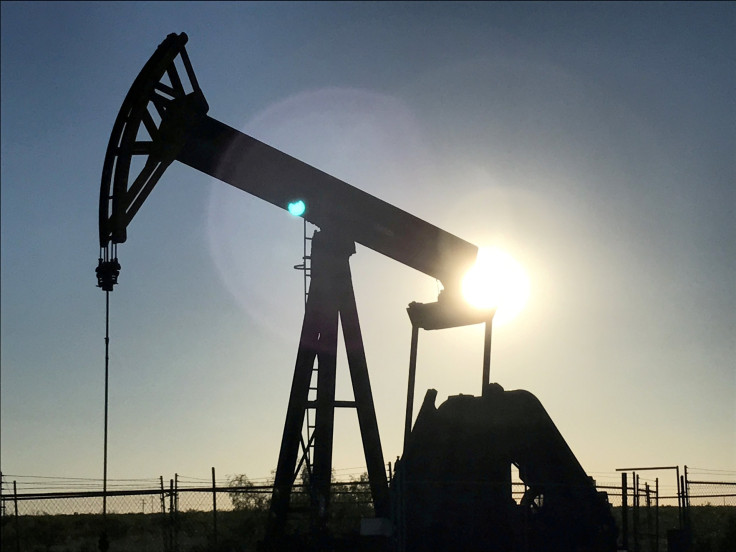US Oil Producers Are "Missing Out" On $100 Million A Day In Revenue

The American oil industry is in the best condition it has been in decades. Shale drilling has unlocked billions of barrels of oil across the Lower 48, and companies are getting good enough at extracting it that many can pull it out of the ground for less than $50 a barrel compared with upwards of $90 a barrel five years ago. Now that oil prices in the U.S. have risen to around $70 a barrel, it is leading to some rather impressive earnings results.
This article originally appeared in the Motley Fool.
As good as things have been lately, they could be much, much better -- as in tens of billions of dollars in additional revenue for the same amount of production better. There is one thing that is keeping those companies from realizing all that additional revenue, though. Here's what is going on in the American shale patch today that is forcing these companies to leave so much revenue on the table and what is being done to correct the situation.
Spread out wide
Using the term "oil prices" makes it seem as though there is one price for the commodity worldwide. That is far from the case. For U.S. oil companies, "oil prices" typically refers to West Texas Intermediate, or WTI. This is generally the benchmark for domestic crude oil, and most oil producers in the U.S. will benchmark the price they get for a barrel of oil to WTI. On the international stage, though, the benchmark price for most oil trading is known as Brent.
Most of the time, the prices of WTI and Brent tend to move in the same direction, as they mostly respond to the same drivers of supply and demand. However, they don't always move in lockstep, and the price between the two can vary by a few dollars. This difference is known as the Brent-WTI spread. Over the past few months, the Brent-WTI spread has been widening, so much so that today there is a near $10-per-barrel difference between the two, as the price of Brent is close to $80 per barrel.
It is incredibly rare to see a Brent-WTI spread that wide, and it means that domestic oil producers are realizing oil prices much lower than their international brethren. Based on the U.S. current production rates of 10.6 million barrels per day, there is about a $100-million-dollar-per-day difference between selling oil in the U.S. to the international market.
Traffic on the Permian expressway
Ever since oil prices hit their nadir back in January 2016, things have been steadily improving for oil producers. The combination of improved technology and the implementation of best practices across the shale industry drastically reduced costs. The ability to drill much cheaper meant that U.S. companies could start to turn the taps on again much sooner than other parts of the world, and it's why production in places like the Permian Basin have been booming.
All of this cheap crude has led to a new problem, though. We don't have any way to move it. Production growth has overwhelmed the nation's crude oil infrastructure network to the point that many pipelines are at capacity. The demand for transportation is so high that companies have to either pay a premium to move it to high-demand markets like the Gulf Coast or accept a much lower price at a local refinery.
Most of the pipelines suffering from congestion are the ones moving crude oil out of the Permian Basin. Pipeline capacity in some parts of the Permian are so tight that the average wellhead price for oil is $10 per barrel less than WTI. It is getting so worrisome for producers that many companies are drilling wells but not completing them, or even moving to holdings in other parts of the U.S. Conversely, companies that own pipelines or refineries are posting incredible results.
What can companies (and investors) do about it?
Even though oil producers can make money at lower prices, that doesn't mean they will want to do so in perpetuity. Also, pipeline owners are looking to build pipelines as fast as they can get approved.
Eventually, additional capacity to move product from the wellhead to the Gulf Coast or even to one of the many crude oil export terminals will get built. As this happens, the spread between Brent and WTI should narrow. That will likely boost domestic prices. So investors looking at the long term should probably not get too worked up about this uncommon situation and make investment decisions based solely on it.
The one takeaway for those looking beyond the next year or so is that the U.S. has a lot of crude that needs to get moved to market, and infrastructure companies will have ample opportunities to grow. According to oil and gas infrastructure giant Enterprise Products Partners (NYSE:EPD), the U.S. will need the capacity to export as much as 7 million barrels of crude oil per day by 2025, and that the six pipelines from the Permian Basin to the Gulf Coast currently under construction will not be enough pipe by mid-2021. That's why the company plans to bring more than $5 billion in new energy infrastructure projects into service over the next 18 months.
The U.S. oil industry is headed into uncharted territory, and this wide price difference in WTI and Brent crude oil is another sign that there are loads of investment opportunities for investors looking in the right place.
Tyler Crowe owns shares of Enterprise Products Partners. The Motley Fool recommends Enterprise Products Partners. The Motley Fool has a disclosure policy.





















